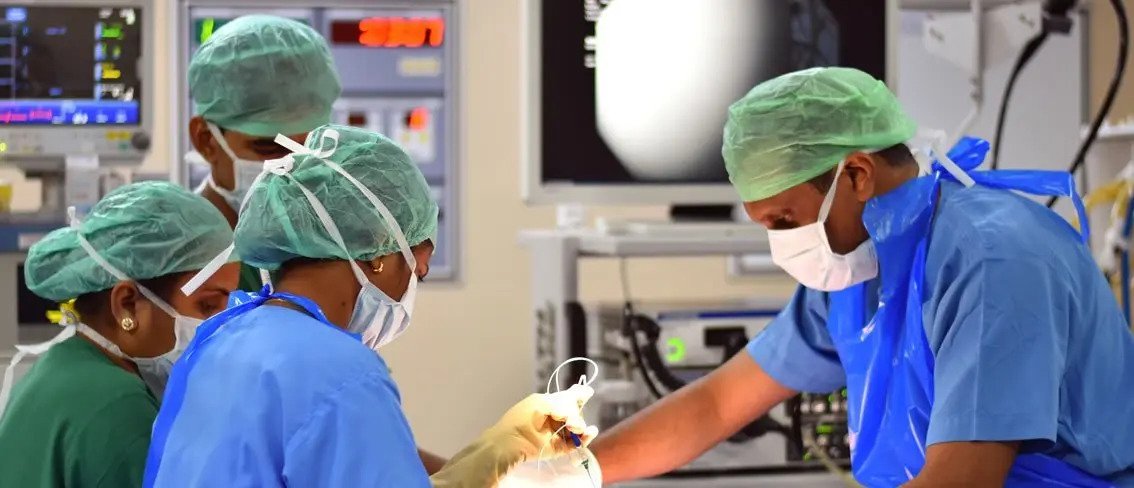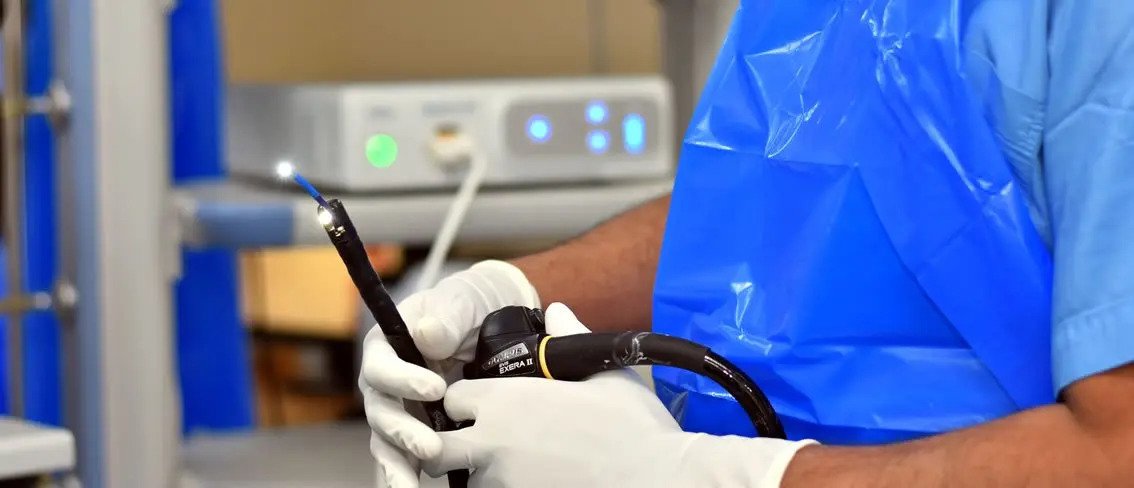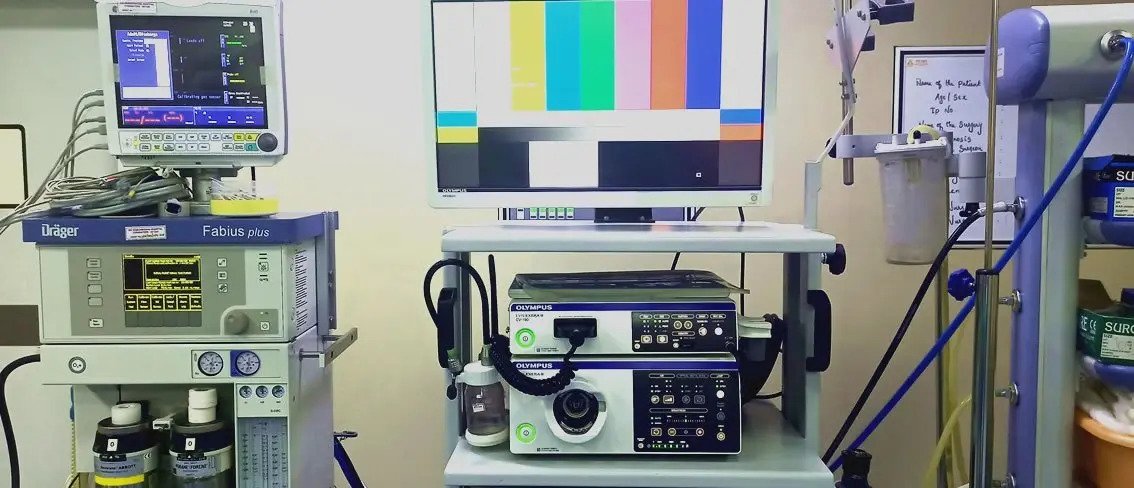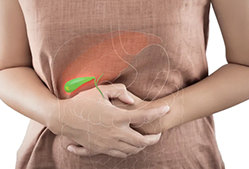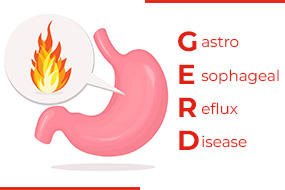The traditional method of surgical treatment for hernia is called
‘Open Hernia Repair’ and it may be done using local anaesthetic or general. The surgeon pushes the tissue which is protruding back into position. Then the weakened area of the abdominal wall is closed using sutures and the area is reinforced using a synthetic mesh. The opening is then closed using staples or even using surgical glue.
Here at
Sri Ramakrishna Hospital we are also adept at using the laparoscopic or minimally invasive procedure
(also called keyhole surgery). This is done under general
anaesthesia. Multiple little incisions are made. Gas is used to inflate the cavity and then a laparoscope is passed into it. The surgeon views the region and then uses other instruments
(inserted through other incisions) to repair the weakened section using mesh. This procedure has considerably less scarring and quicker recovery times with less pain for patients.
There are a number of surgical procedures which provide relief to people suffering from chronic pancreatitis.
Peustow’s Operation:
The pancreatic duct is opened up from head to tail. Then the small intestine is attached directly to the pancreatic duct using sutures. This results in the pancreatic juice directly draining into the small intestine. It is done either through open surgery or laparoscopically. Whipple Procedure: Also called a pacreaticduodenectomy or a pancreatoduodenectomy, the Whipple procedure involves removing the head of the pancreas, the duodenum, the proximal jejunum, gallbladder and distal stomach.
Whipple Procedure:
Also called a pacreaticduodenectomy or a pancreatoduodenectomy, the Whipple procedure involves removing the head of the pancreas, the duodenum, the proximal jejunum, gallbladder and distal stomach.
Medically called laparoscopic cholecystectomy, the procedure involves removing the entire gallbladder. It is usually done due to excessive formation of gall stones. A number of small incisions are made in the abdomen. Through one of them, a laparoscope (a video camera) is passed.
The cavity is then inflated. This allows clear visibility within the space, for the surgeon. Surgical instruments are then passed into the space through the other incisions. They are used to remove the gallbladder. In a typical body, the bile is stored within the gallbladder but, once it is removed, it moves directly from the liver (where it is produced), through the bile duct into the small intestine. There is no storage. This rarely has any impact on digestion. The laparoscopic approach allows the procedure to be completed in less than 1and 1/2 hours.
Discharge is very quick with some procedures even being done as day care. Alternatively, a day or two in the hospital for recovery in enough. There may be a little soreness for a week but within 10 days the patient may return to normal activity. Recovery is faster than in traditional procedures, pain is less and scarring is minimal.
Haemorrhoidectomy:
This is a surgery to remove haemorrhoids. It is done under conventional anaesthetic for the most part although general may also be used. The procedure involves making incisions around the anus. This allows the surgeon to cut out the haemorrhoids. It gives patients relief from pain, swelling, bleeding and itching caused by the haemorrhoids. However, the incisions are in the sensitive place and require stitches, causing pain in itself. It is usually done as an outpatient procedure and patients go home the same day.
Stapler Haemorrhoids:
This is a minimally invasive procedure to treat a condition wherein the haemorrhoids slips out of the anal canal and down. To correct it, a staple repositions the haemorrhoids. It also cuts off blood supply causing them to die. It causes less pain and recovery is quicker
Laser:
As the name indicates, a laser is used in this minimally invasive procedure. It is precisely used to target haemorrhoid tissue which it burns away.
Rubber band ligation:
In this, a rubber band is installed around the base of the haemorrhoid. This cuts off blood supply and results in the death of the tissue.
Sclerotherapy:
In this, the principle is the same – reducing blood flow to the area. But, in this case, a chemical solution is used to to shrink the haemorrhoid and kill it.
There are several surgical approaches to
treating an anal fistula. It is usually carried out under general anaesthetic although overnight stay may not be necessary. The main challenge is to not to damage the sphincter muscles (the muscles which control the opening and closing of the anus) as it can cause bowel incontinence.
Fistulotomy:
In this procedure, the surgeon cuts along the length of the fistula, thereby opening it up. This will allow it to heal as a flat scar. This is the most effective method but when it runs the risk of injuring the sphincter muscles, other techniques (as listed below) are preferred.
Seton Techniques:
A seton is a strip of surgical thread which is allowed to stay in the fistula for weeks, keeping it open. It allows it to drain and helps in healing while avoiding damage to the sphincter. Advancement Flap Procedure: In this procedure, the fistula is cut and scraped out first following which it is covered using a flap of tissue taken from inside the rectum.
Fibrin Glue or Collagen Plug:
Fibrin glue is made from plasma protein. It might be used for sealing up a fistula and healing it (instead of cutting it open). The tract is first cleaned and then the internal opening is closed using stitches. Then the glue is inserted through the external opening to seal the fistula. Alternatively, a plug made up of collagen protein may be used.








